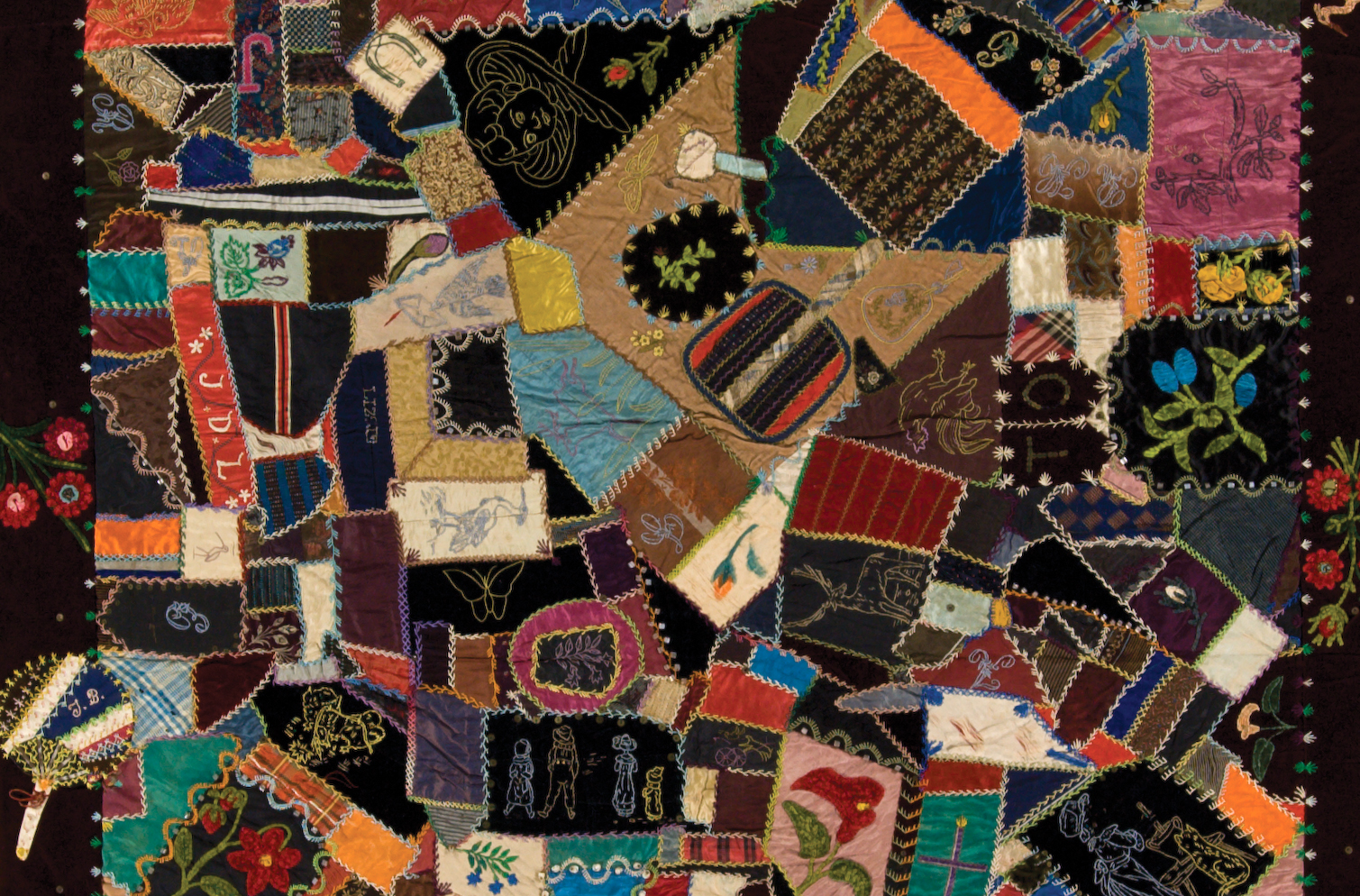
A Fairyland of Fabrics
July 24-Oct 25, 2009
The Victorian Crazy Quilt

Head-on collisions of imagination and luxurious materials are credited for the creation of quilts in the exhibition "A Fairyland of Fabrics: The Victorian Crazy Quilt". This exhibition of lavish, over-the-top textiles and home interiors reflected a time when "more was more." Nineteen one-of-a-kind Victorian-era quilts from the center's collection were featured.
Beverly Gordon, professor of textile and apparel design at the University of Wisconsin-Madison, curated the exhibition following her fellowship at the IQM where she studied dozens of examples of Crazy quilts from the late 1800s and early 1900s. "Crazies" are made of irregular shapes of many varieties of material and have a seemingly random quality which often masks skillful planning and compositional treatment. Gordon notes, "The 'crazy' look was seen as the epitome of urbane, sophisticated taste. Asymmetrical, irregular geometric pattern and crazed lines (the term came from ceramics) were associated with the Japanese style, which had taken the public by storm at the 1876 Centennial Exposition in Philadelphia.”
These quilts are "veritable showpieces, and true labors of love", according to Gordon. She cataloged images depicting fauna and flora, buildings, children, politicians, even a celestial comet spotted in the 1890s. Visitors will see quilts constructed from cigar ribbons, wool suiting, calico, silk taffetas and satins, and embellished with lace, embroidery, paint, ribbons, beading, sequins, and shells. Gordon explains, "What really mattered on a Crazy quilt was a feeling-an evocation of a happy, dreamy place-an enchanted "fairyland" or Never-Never-land that existed far-away, apart from any painful realities or practicalities." Making a Crazy quilt was one way women could temporarily escape for the unsettling, rapid change that accompanied industrialization, urbanization, and immigration at the end of the 19th century.